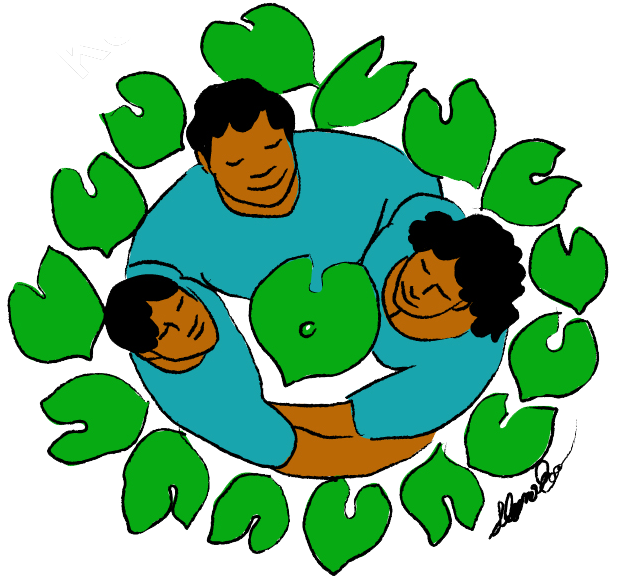Building an Urban Canoe House
KKV’s KVIBE just celebrated its 16th anniversary on February 20 where the youth hosted current staff and past alumni with food and games.
Austin Haleyalpiy is the Program Coordinator for KVIBE, one of KKV’s after-school youth programs that fosters transformative healing through popular education and social enterprise. Home for Austin is KVIBE, Feshailap, Lamotrek, and Satawal atolls of the Outer Islands of Yap in the Federated States of Micronesia, as well as the village of Chol in Ngaraard state in the Republic of Palau. He sits at his office desk as he describes what a traditional canoe house on Feshailap looks like. Surrounded by bikes, stacks of bike parts, and working tools, it is not that difficult to see the parallels that already exist between KVIBE and the canoe house. After all, the bike is referred to fondly as their urban canoe.
“The first thing you see [when approaching Feshailap by boat at high tide] is the water break probably 5 or 10 yards away from the front of the canoe house. It’s surrounded by coconut trees, pandanus trees. Inside there’s a lot of wood chips from canoes. There’s random bodies of canoes that are stacked up toward one side. On the left side, there’s a body for a motor boat flipped upside down where people laid down and sat. Then you have those styrofoam buoys that float in the water laid out near the chairs. The canoe house has a triangular shaped roof that we thatched. On the side beams, you can see where the kids have written their names and drawn stuff. You can see random articles of clothing. There’s a hammock towards the front on the right side. It’s literally a fishing net they use as a hammock. Outside toward the front on the right, there’s a spot with 2 coconut trees that have a piece of wood tied between them where they put all the machines for the motor boat. Then you have, on the outer side, those one person canoes. Some are even just parked out in the water and tied to something. There’s an old oxygen tank hanging on the house. It’s used as a bell and is rung at 1pm signaling time for the men to gather with their drinks of faloopa and sikaliwi and discuss what the week is going to look like. It smells like saltwater and tobacco smoke. It’s windy but not too windy though. Windy enough that you can feel comfortable to sleep. Out back there are seats or what’s left of a circle that you know was left there from the day before.”
Read more about Austin here.
Austin continues, “the way I look at KVIBE man, it reminds me of the men’s house, the canoe house back home. This is the place where experience is shared. This is a space where we’re trying to foster leadership and different roles in our internship positions. Everybody is getting together at a certain time working on our urban canoes. I think for young men that’s important to have those kind of relationships. It’s good for their souls.”
What better place to build an urban canoe house than one where they’re already building urban canoes.
Follow KVIBE on Instagram @kvibekkv
Austin shares the ways KVIBE has been resilient in face of the pandemic. Programming has been virtual and recently has began slowly transitioning back to in-person bike clinics where the youth can once again build their urban canoes. These urban canoes and the lessons they come with give KVIBE’s youth the tools to better navigate healthy lifestyles and relationships.
“I feel like I relate a lot to these kids being that a lot of them are 1st generation born American citizens that grew up here. They can understand their language better than they can speak it. They have to juggle different hats - go home and its one way culturally everyday. Soon as you hit the door, go outside you have to switch and kind of adjust so that you can survive socially. So I know how that goes. It can be taxing. I never had a KVIBE in North Carolina.”





